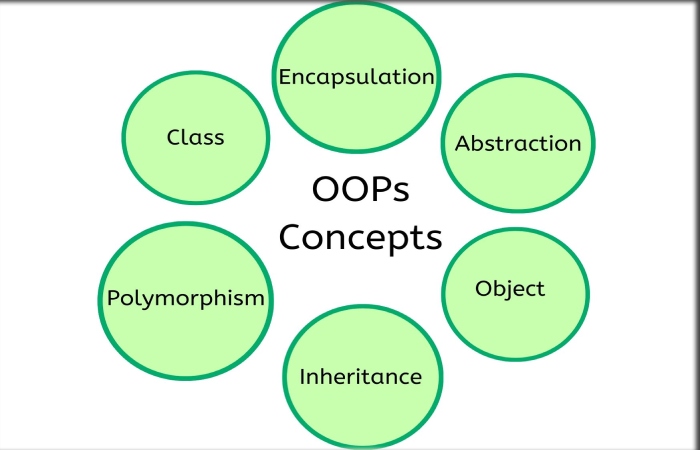Share This Article
Introduction
Object-oriented programming languages (OOP) is a programming style characterized by identifying classes of objects closely relate to the associate methods (functions) with which they are associated. It also includes ideas about attribute and method inheritance. It is a technique based on a mathematical discipline known as “abstract data types” for storing data with the procedures necessary to process that data. OOP offers the potential to evolve programming to a higher level of abstraction.
What Is Object-Oriented Programming Languages?

Object-oriented programming language (OOP) is a pc programming module that organizes software design around statistics or gadgets in preference to features and logic. For example, an item may be describe as a records discipline with unique attributes and behaviors.
OOP specializes in the objects developers need to manipulate, no longer the common sense require to control them. This programming approach works nicely for massive, complicated programs and is actively up-to-date or maintain. These encompass programs for production and layout, in addition to mobile packages; For instance, OOP can be use for a simulation software program for manufacturing systems.
The agency of an item-orient program makes the technique effective for collaborative development, where initiatives are divided into groups. Other benefits of OOP encompass code reusability, scalability, and performance.
The first step in OOP is to collect all of the items that a programmer wants to manage and identify how they’re related to every other; an exercise is called information modeling.
Examples of an object can include a variety from bodily entities like a person describe by properties like name and deal with to small pc programs like widgets.
Once an item is known, it’s far tag with an item class that defines the form of information it consists of and any logical sequence which can control it. Each unique, logical collection is called a method. Finally, objects can speak using nicely-described interfaces known as messages.
What Is The Structure Of Object-Oriented Programming Languages?
The structure or constructing blocks of object-oriented programming encompasses the subsequent:
Classes are consumer-describe facts that serve as models for individual items, attributes, and strategies.
Objects are times of a class create with particularly describe facts. The items can correspond to actual gadgets or abstract entities. The outline is the best-define item when the class is initially describe.
Methods are capabilities within a category that describe the conduct of an object. Moreover, Each approach contained inside the elegance definitions starts concerning an instance object. Also, subroutines contain in an object are as example methods. Programmers use strategies for reuse or maintain capability encapsulated in a single object simultaneously.
Attributes are define inside the class template and constitute the kingdom of an item. Objects have records stored in the characteristic discipline. Class attributes belong to the magnificence itself.
What Are The Examples Of OOP?
Object-oriented programming languages – While Simula is consider the first object-oriented programming language, many different programming languages today are use with object-orient programming. But some programming languages are better suit to OOP than others. For example, programming languages that are consider natural OOP languages treat them as gadgets. Other programming languages are primarily design for object-oriented programming but contain some procedural strategies.
For instance, famous natural OOP languages encompass:
- Ruby
- Scala
- JADE
- Emerald
Programming languages designed primarily for OOP include:
- Java
- Python
- C++
Other programming languages that pair with OOP consist of:
- Visual Basic .NET
- PHP
- JavaScript
What Are The Benefits Of Object-Oriented Programming Languages?

Object-oriented programming languages benefits include:
- Encapsulation allows objects to be self-containe, making debugging and collaborative development easier.
- Reuse Code can be reuse through inheritance, meaning a team does not have to write the same code multiple times.
- Programmers can create new programs faster by using multiple libraries and reusable code.
- Easily expandable and scalable. Programmers can put into effect machine functionalities independently.
- Interface descriptions. Descriptions of external systems are simple because of the messaging strategies used for object communique.
- Encapsulation and abstraction conceal complicated code, simplify software preservation, and defend Internet protocols.
- Polymorphism lets in a single function to match the magnificence it’s miles in. Different items can also pass thru the equal interface.
Conclusion
In my content, I want to describe an Object-oriented programming languages pc programming module that organizes software design around statistics or gadgets in preference to features and logic. For example, an item may be describe as a records discipline with unique attributes and behaviors. It also includes ideas about attribute and method inheritance. Hence, It is a technique based on a mathematical discipline known as “abstract data types” for storing data with the procedures necessary to process that data. OOP offers the potential to evolve programming to a higher level of abstraction.
